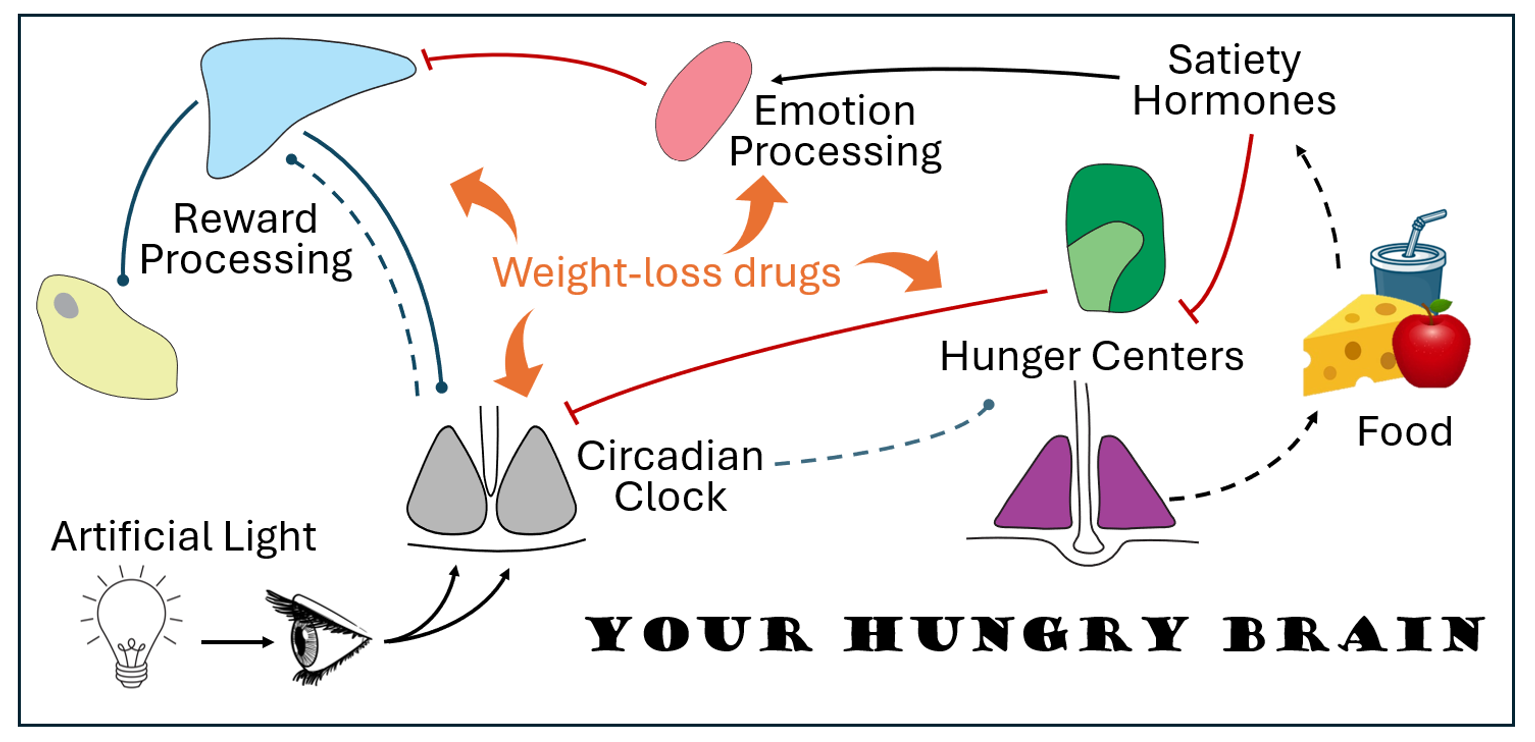What we do:

Decision to eat requires the brain to integrate information from multiple regions. How does the brain prioritize these signals to drive behavior? Our lab is exploring this by targeting specific neuron populations and observing their effects on physiology and behavior in real-time. Through advanced genetic tools, in vivo neurophysiology, and behavioral assays, we are mapping the neural circuits that govern essential behaviors like feeding and sleep in mice. Additionally, we are at the forefront of developing new methods to manipulate the molecular, biochemical, and electrical properties of individual cells, driving breakthroughs in our understanding of brain function.
